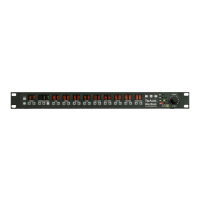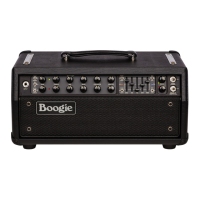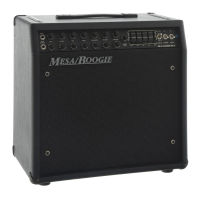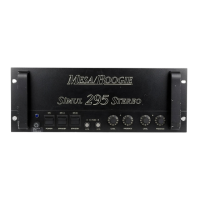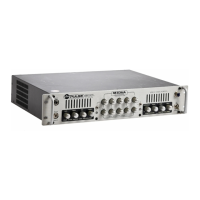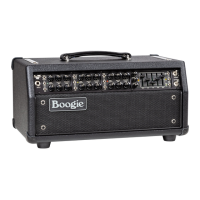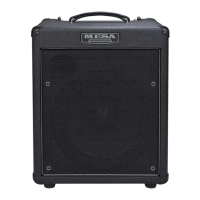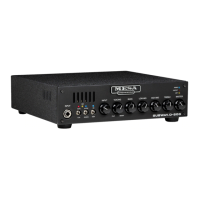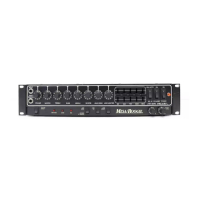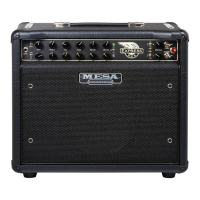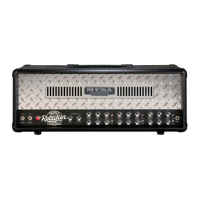No matter where you apply it, the enhancements found in this voicing add another dimension to the sound and a valuable additional
voice to each of the three Channels.
BASS
Much like the MID, the BASS control responds like a typical Tone control and blends in a fairly wide slice of rich bottom
end to round out the sound. Internal switching that occurs when the different Modes are selected re-voices the frequency and amount
of bass present for each circuit. This difference is crucial to the sounds and a big part of their character.
Channel 1 incorporates a much lower bass frequency that adds depth, dimension and air to the sound. Both Channels 2 and 3
utilize a higher frequency of bass that produces a more resonant, thumping quality and keeps things tighter and more bouncy. This
frequency can be used in greater proportions as compared with the lower – and possibly more tone-hampering – frequency used in
Channel 1. Therefore the need to be able to have different amounts of these two different frequencies is critical to both great sound
and great footswitching compatibility between the Channels.
In Channel 1 we like the balance of the BASS control when it is blending in warmth and body, but not overpowering the attack and
sparkle in the mix. Depending on the setting of the GAIN control this can be different, as the lower GAIN settings can handle a little
higher BASS settings. You will have to experiment with the exact spots and below is a rough guideline example, but basically, as
GAIN goes up - BASS should come down;
Example;
With the GAIN at 12:00 – BASS at 1:00
With the GAIN at 1:00 – BASS at 12:00
With the GAIN at 2:00 – BASS at 11:00
The higher frequencies found on the BASS control in the Channels 2 and 3 are much more forgiving and can be used in higher
amounts than the lower frequencies present in Channel 1. BASS settings between 12:00 and 3:00 will be commonplace - with lower
GAIN settings needing higher BASS settings and higher GAIN settings calling for a more careful use of the BASS. As the gain goes
down (GAIN 9:30 – 12:00) and things get tighter, there is a need for the rich low-end air that is created by the BASS control. When
the gain saturates things as it’s cranked up (GAIN 12:00 – 5:30), the notes thicken up and less bass is needed to create girth until - at
a certain point - the bass frequencies start to slow things down and can even get in the way for some styles.
OUTPUT
The TRIPLE CROWN features a global OUTPUT control enabling you to raise and lower the overall playing volume
with just one control once you have setup your preamp sounds and balanced the Channels with each other using the individual
Channel MASTER controls. The OUTPUT is located just before the power section’s DRIVER stage and acts as an EFFECTS Return.
Be sure to zero out the OUTPUT control before each session and after hitting STANDBY, raise the level slowly so that you avoid ac-
cidental high volume surprises, especially at gigs or in the studio where sudden spikes in signal could cause damage to speakers,
engineers or an audience.
Some traditionalists like to effectively “remove” the Channel MASTER controls from the circuit and use the OUTPUT control as the
MASTER by cranking the Channel MASTER(s) all the way up. Others feel the opposite approach (turning the OUTPUT all the way
up and using the Channel MASTER controls as the OUTPUT) produces a better response. Either approach is fine and each will
produce a slightly different response, but both those scenarios may make it more difficult to get a uniform signal level at the Effects
Loop depending on dynamics and saturation levels in the Channels.
We find that using both the Channel MASTER and the OUTPUT in their middle range produces great response and offers both the
maximum flexibility in balancing the Channels and your playing volume as well as more uniform levels at the Effects Loop.
PAGE 9

